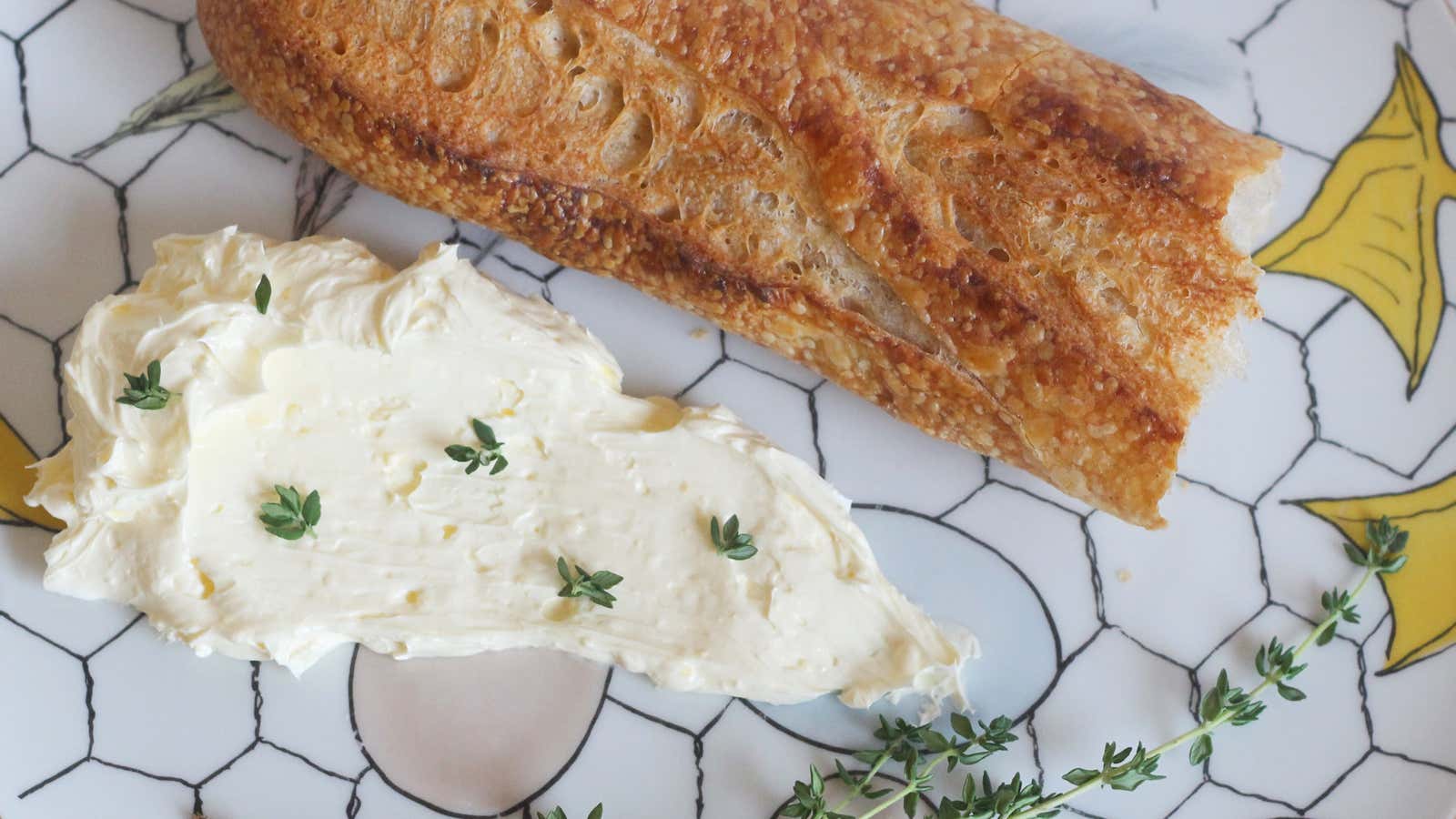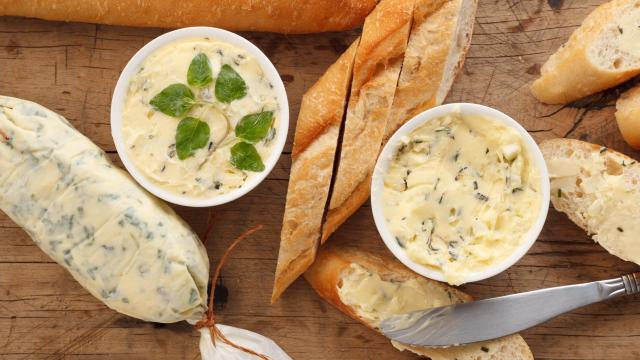Food on boards is very popular, perhaps more popular than it’s ever been. Search “grazing table” on this world wide web, and you’ll find lots of photos of very large charcuterie and cheese boards, along with many blogs insisting that they are not just “big charcuterie boards.” Grazing tables are a different, new concept unlike any board you’ve ever seen before. (They’re also not a buffet. Buffets are ugly and grazing tables are beautiful.)
I fail to appreciate the distinctions, but it really doesn’t matter what you call them; it’s the same kind of food you always see on boards, scaled up. But you know what you don’t see on these vast, sprawling tables of food? You know what almost never makes an appearance, even though it has as much to give as brie or pork liver mousse or whatever Trader Joe’s item is popular that week? Butter. Butter should be on more boards. I could craft an entire board around butter.
Why you should make a butter flight

I will never turn down a collection of meat and cheeses, but I would be floored if I walked into someone’s home to find a neat little collection of churned dairy, with really good bread set out for tasting. This, to me, would be luxurious.
Butter is not a monolith. Beyond the simple unsalted sticks you get at the grocery store, there are tons of variation in “plain” butter (and there’s even more variation in those simple sticks). You’ve got cultured butter, Icelandic butter, Irish butter, European-style butter — and variation within each of those categories, depending on how the manufacturers source their milk and make their butter. These subtle differences from butter to butter should be explored and celebrated, and a butter flight (or board, or tasting, or whatever you want to call it) is a good way to do that. Supplement with some compound butters, and you’ve got a delicious and decadent food-on-board scenario.
How to make a butter flight
Start by grabbing a couple of fancy “plain” butters — “snacking butters,” I call them. A couple of salted, cultured specimens from different regions will work just fine. (This is my current favourite snacking butter, if you are looking for suggestions.) Then, grab some cheaper sticks to make your compound butters. You are welcome to add as many butters to your board as you like, but I think two “plain” and three compound makes for an interesting and engaging board.
If you’ve never made a compound butter before, do not fret, it is very easy. Take some room-temperature butter, and blend it with something else that is not butter. My personal favourites are duck butter, chicken butter, bacon butter, brie butter, yogurt butter, and black garlic butter, but you can invent your own.
Cheese, vegetables, herbs, citrus zest, capers — all are good candidates for flavouring your buttery creation. There are no hard and fast rules about how to make compound butter, but you’ll want to keep water out of the equation. Cook down (and cool) vegetables before adding them to your butter, and keep water-based seasonings to a minimum if you want your butter to hold its form.
Blitz everything in the food processor until smooth. If you want your butter to be studded with flecks of capers or lemon zest or whatever, fold that stuff in after everything else is blitzed. Scrape the compound butter into a pretty dish, or onto some plastic wrap if you wish to shape it into a log. Roll and shape the butter using the plastic wrap, then chill until you are ready to serve.
How to serve a butter flight
Take all of your butters — plain and compound — out of the fridge an hour before you wish to serve them. Cold butter is hard to taste, and this is about appreciating butter’s subtler qualities.
Arrange your butters in a pleasing configuration on a board, just like you would cheese. Cut up a baguette and break out some seedy crackers, and arrange your butter delivery systems around the butter. Slice some radishes, preferably French breakfast radishes, and fan those out next to the bread and crackers. (A buttered radish is a simple, vastly underrated pleasure.)
For accoutrement, get some jam and honey involved. If you want to get weird, you can set out some hard boiled egg halves. (It may sound odd, but butter is transcendent on hard boiled eggs.) For the beverage, serve Champagne and/or an aggressive carbonated mineral water — both are great palate cleansers, and it’s good to reset with sips between butters.

Leave a Reply
You must be logged in to post a comment.